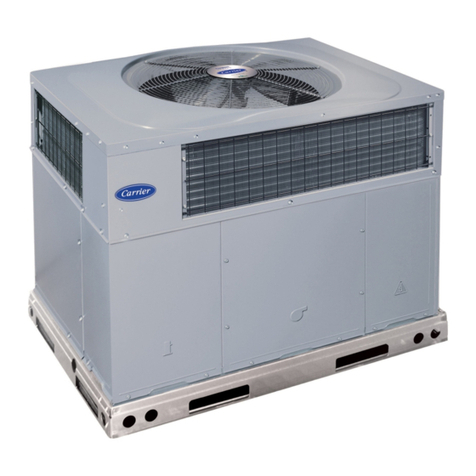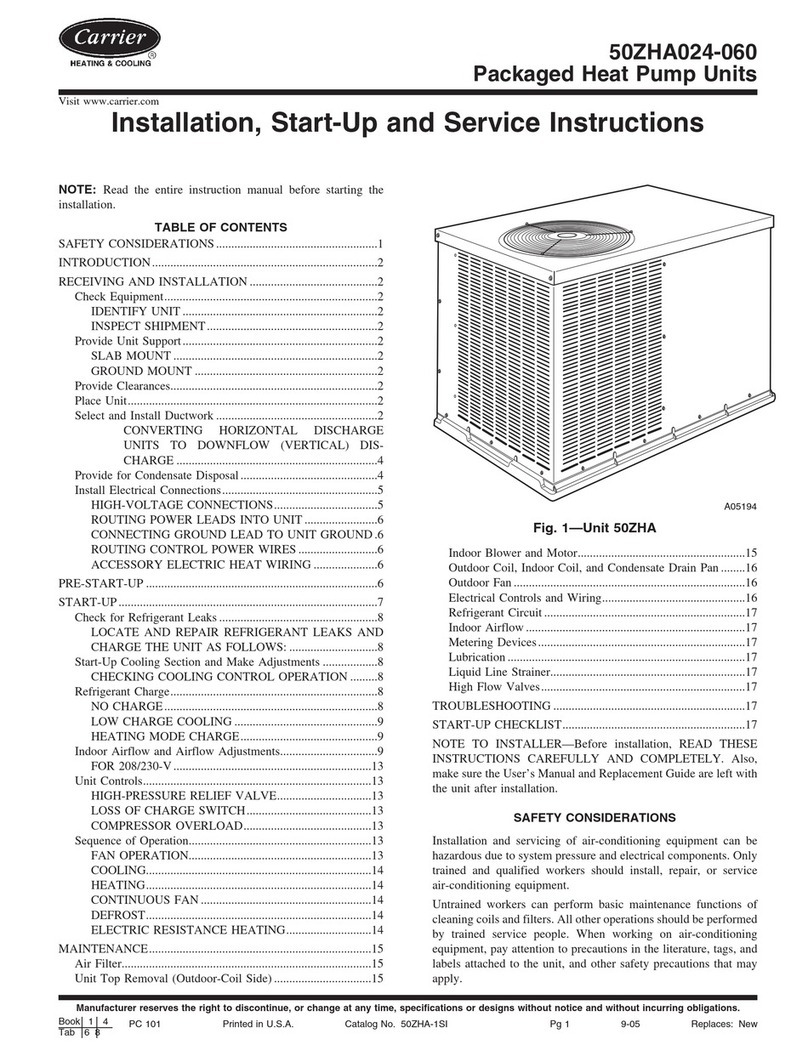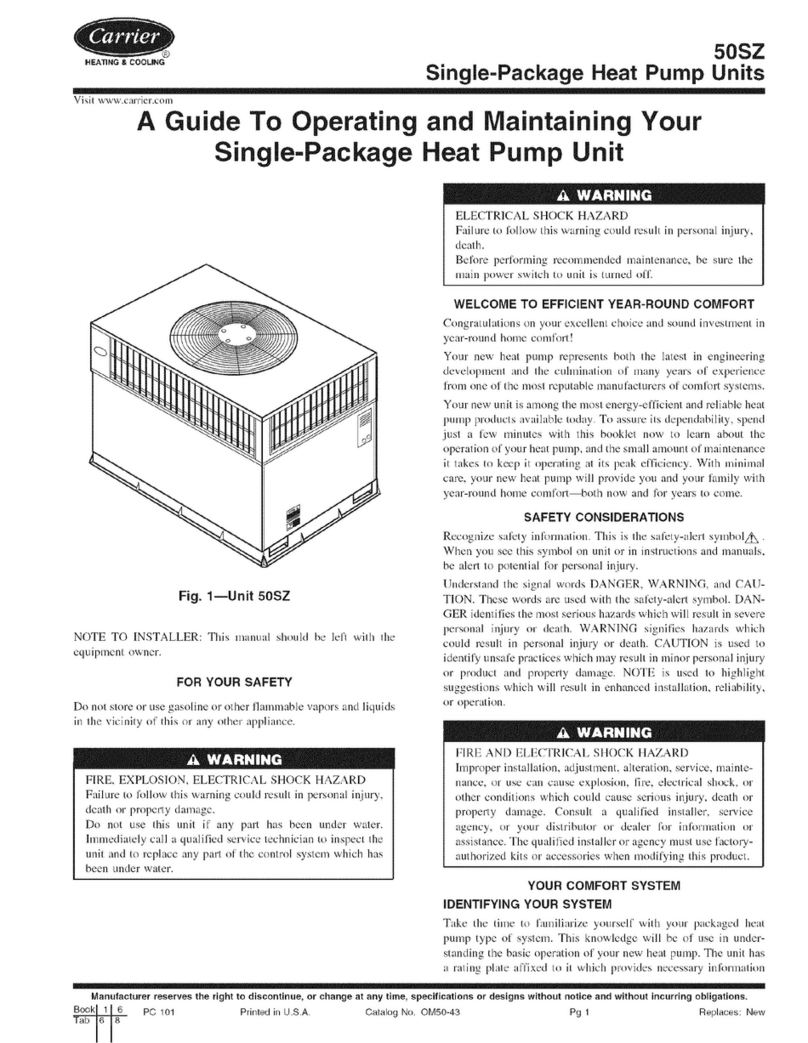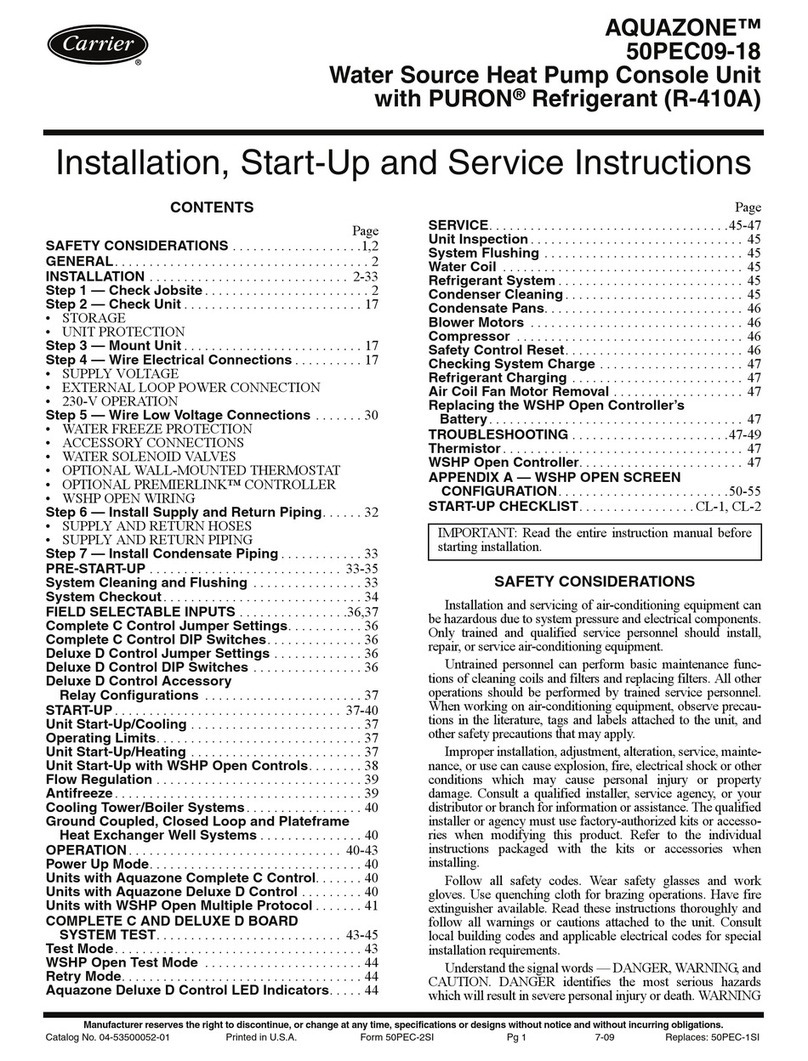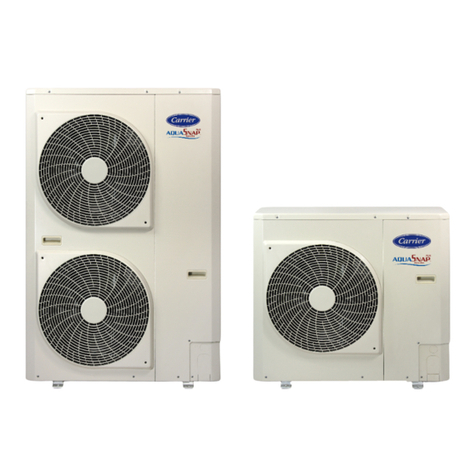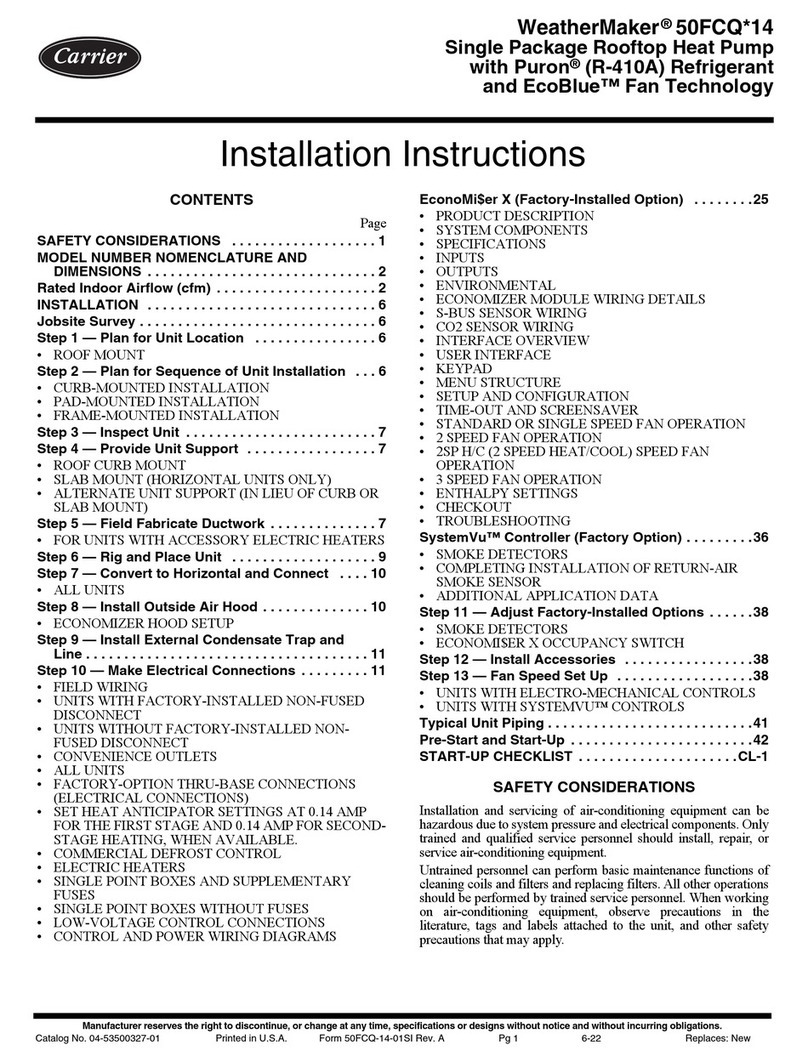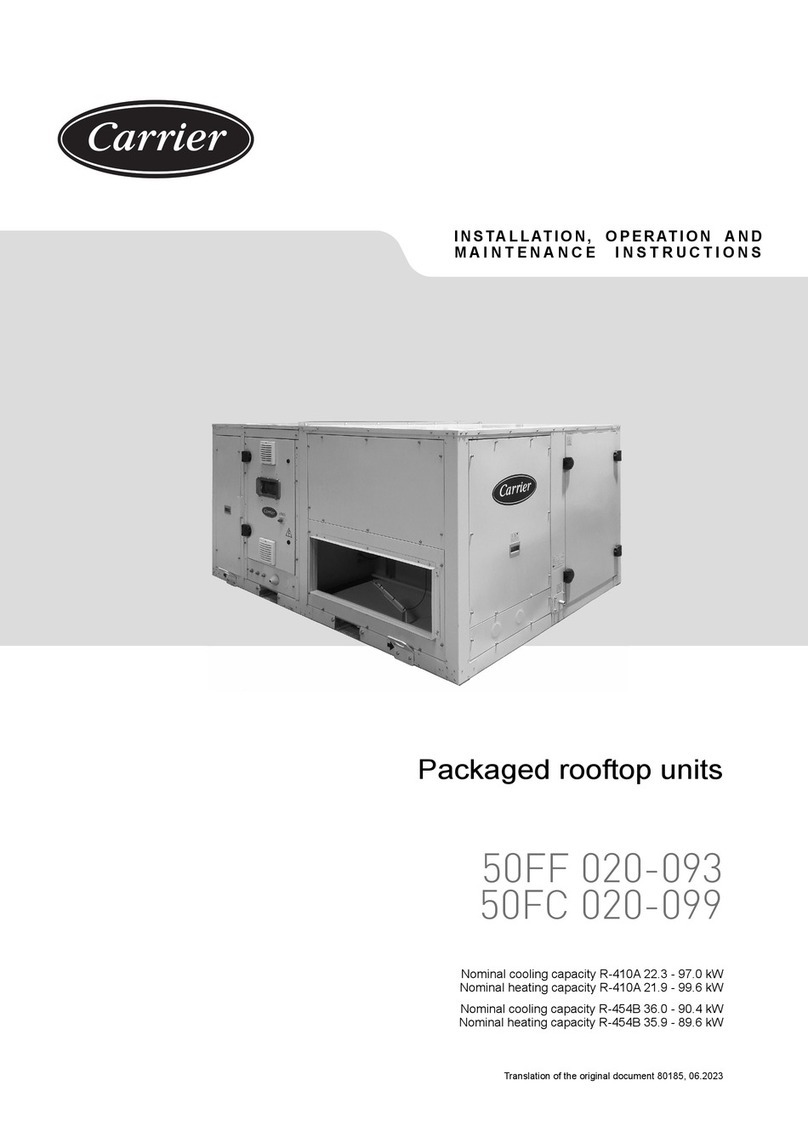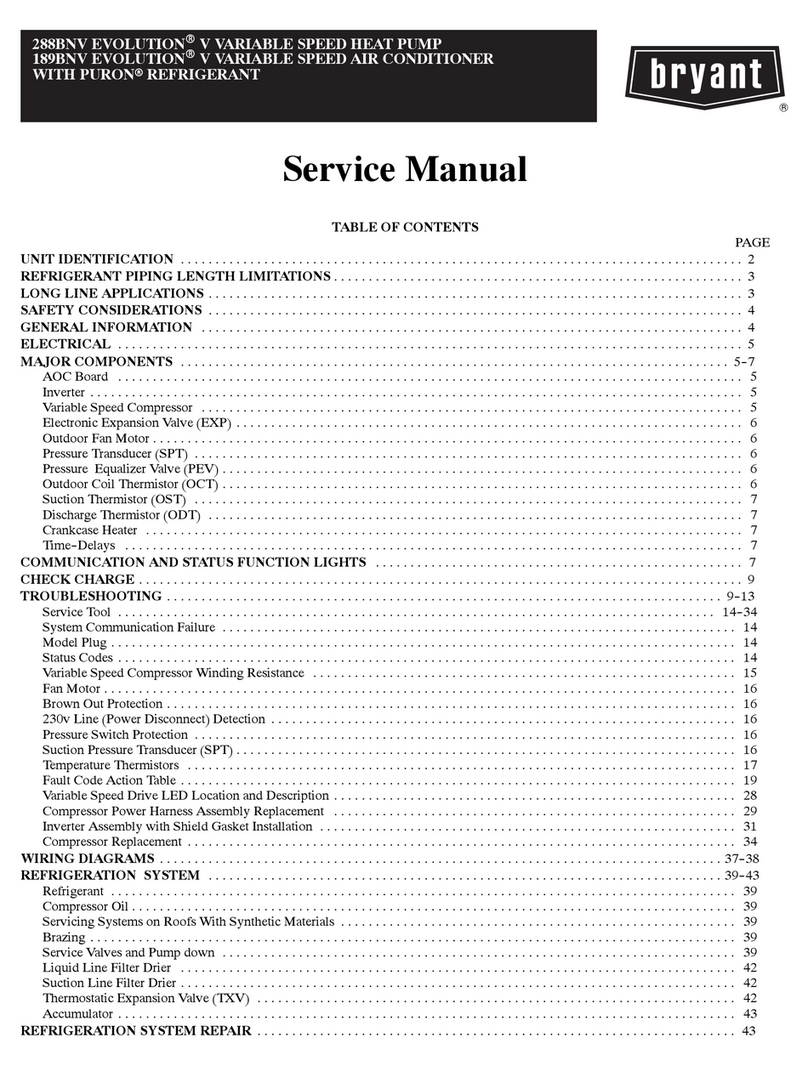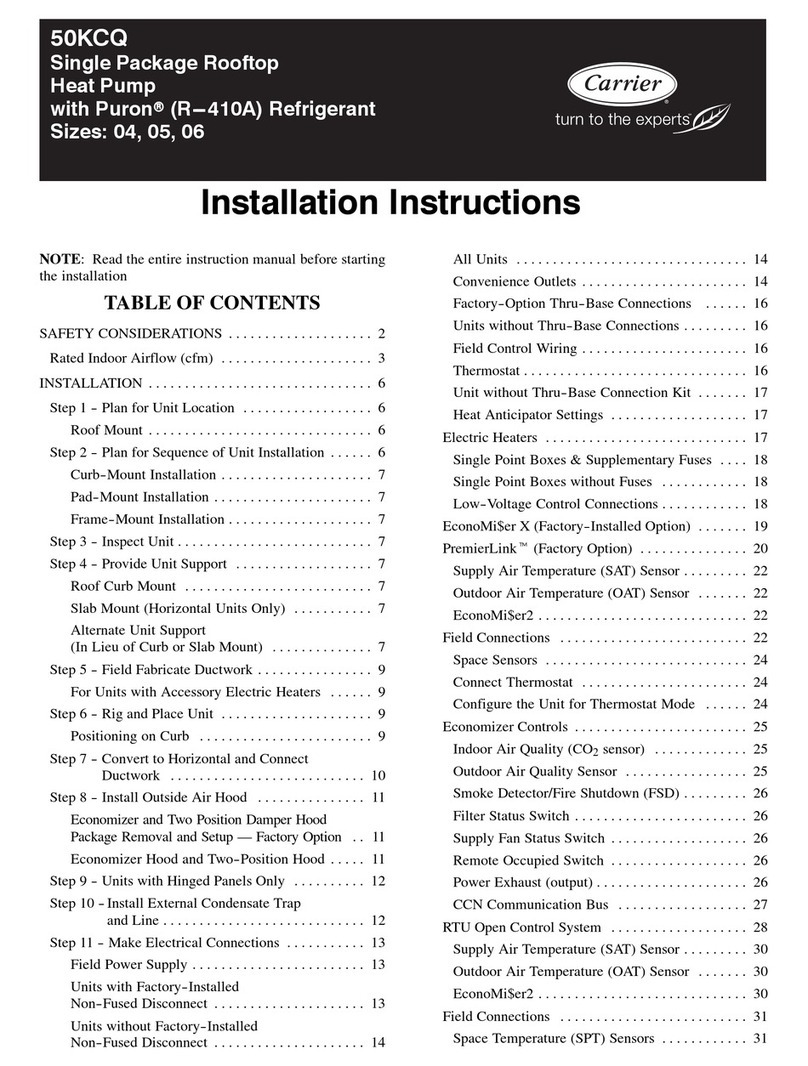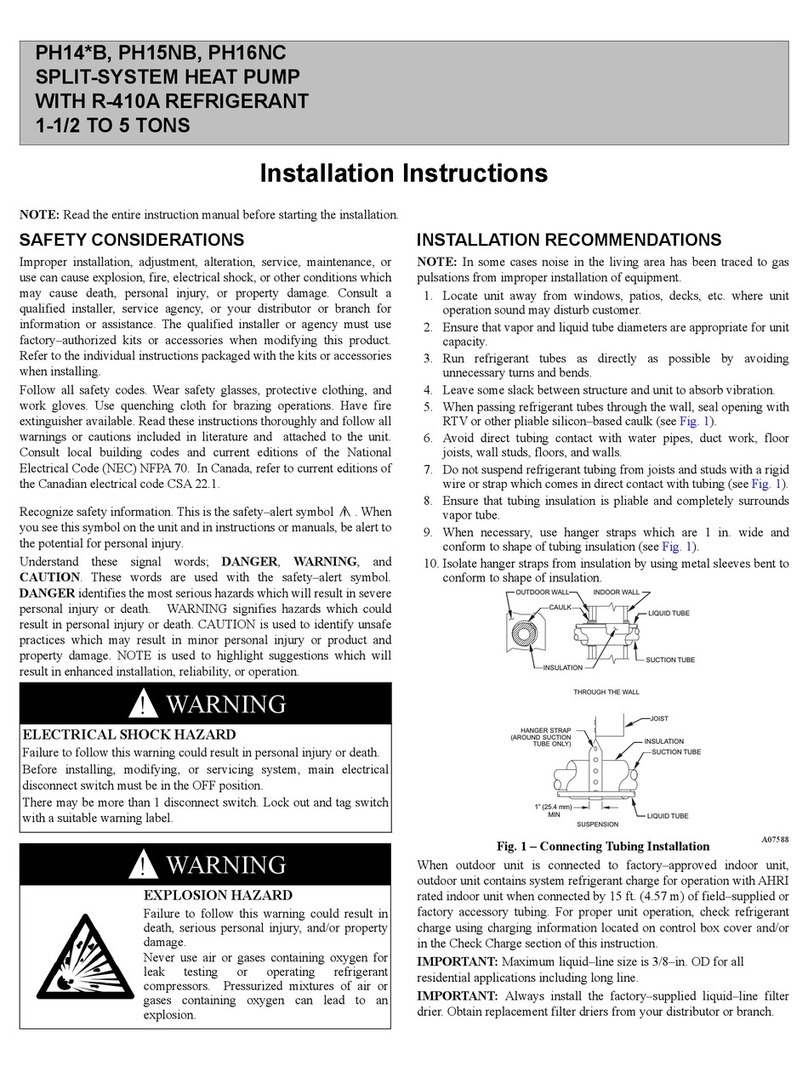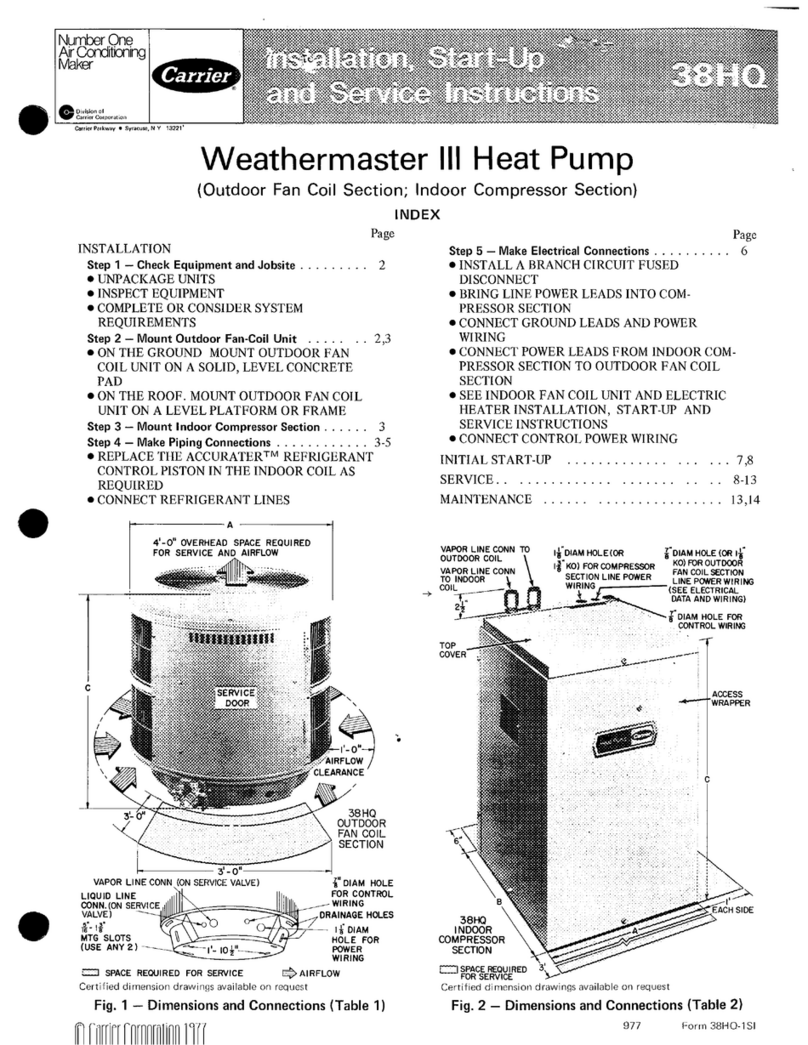
6
INSPECT UNIT — To prepare the unit for installation, com-
plete the procedures listed below:
1. Compare the electrical data on the unit nameplate with
ordering and shipping information to verify that the
correct unit has been shipped.
2. Verify that the unit is the correct model for the entering
water temperature of the job.
3. Wait to remove the packaging until the unit is ready for
installation.
4. Verify that the refrigerant tubing is free of kinks or dents,
and that it does not touch other unit components.
5. Inspect all electrical connections. Be sure connections are
clean and tight at the terminals.
6. Loosen bolts and remove shipping clamps on compres-
sors equipped with external spring vibration isolators.
Compressors are internally spring-mounted.
7. Locate and verify any accessory kit located in compressor
section.
8. Remove any access panel screws that may be difficult to
remove once unit is installed.
Step 3 — Locate Unit — The following guidelines
should be considered when choosing a location for the WSHP:
• Units are for indoor use only.
• Provide sufficient space for water and electrical
connections.
• Locate unit in an area that allows for easy access and
removal of access panels.
• Allow enough space for service personnel to perform
maintenance.
Step 4 — Mount Unit — Rod attachments must be able
to support the weight of the unit. See Tables 1 and 2 for unit op-
erating weight.
Step 5 — Connect Piping — Supply and return piping
must be as large as the unit connections on the heat pump (larg-
er on long runs). Never use flexible hoses of a smaller inside
diameter than that of the water connections on the unit. The
water-to-water series units are supplied with either a copper or
optional cupro-nickel condenser. Should your well driller ex-
press concern regarding the quality of the well water available
or should any known hazards exist in your area, Carrier recom-
mends proper testing to assure the well water quality is suitable
for use with water source equipment. In conditions anticipating
moderate scale formation or in brackish water a cupro-nickel
heat exchanger is recommended.
Both the supply and discharge water lines will sweat if sub-
ject to low water temperature. These lines should be insulated
to prevent damage from condensation.
All manual flow valves used in the system must be ball
valves. Globe and gate valves must not be used due to high
pressure drop and poor throttling characteristics.
Never exceed the recommended water flow rates. Serious
damage or erosion of the water to refrigerant heat exchanger
could occur.
Always check carefully for water leaks and repair appropri-
ately. Units are equipped with female pipe thread fittings. Con-
sult the specification sheets for sizes. Thread sealant should be
used when connecting water piping connections to the units to
insure against leaks and possible heat exchanger fouling. Do
not overtighten the connections. Flexible hoses should be used
between the unit and the rigid system to avoid possible vibra-
tion. Ball valves should be installed in the supply and return
lines for unit isolation and unit flow balancing.
WATER SUPPLY AND QUALITY — Check water supply.
Water supply should be plentiful and of good quality. See
Table 3 for water quality guidelines.
In all applications, the quality of the water circulated
through the heat exchanger must fall within the ranges listed in
the Water Quality Guidelines table. Consult a local water treat-
ment firm, independent testing facility, or local water authority
for specific recommendations to maintain water quality within
the published limits.
COOLING TOWER/BOILER APPLICATION (Fig. 4) —
To assure adequate cooling and heating performance, the cool-
ing tower and boiler fluid loop temperature should be main-
tained between 50 F and 100 F. In the cooling mode, heat is
rejected from the unit into the condenser water loop. A cooling
tower provides evaporative cooling to the loop water; thus,
maintaining a constant supply temperature to the unit. When
utilizing an open cooling tower, chemical water treatment is
mandatory to ensure the water is free of corrosive materials. A
secondary heat exchanger (plate frame between the unit and
the open cooling tower) may also be used. It is imperative that
all air is eliminated from the closed loop side of the heat
exchanger to prevent condenser fouling.
In the heating mode, heat is absorbed from the condenser
water loop to the unit. A boiler can be utilized to maintain the
loop within the proper temperature range. In milder climates a
“flooded tower” concept is often used. This concept involves
adding make-up water to the cooling tower sump to maintain
the desired loop temperature. No unit should be connected to
the supply or return piping until the water system has been
completely cleaned and flushed to remove any dirt, piping
chips or other foreign material. Supply and return hoses should
be connected together during this process to ensure the entire
system is properly flushed. After the cleaning and flushing has
taken place, the unit may be connected to the water loop and
should have all valves wide open.
Pressure/temperature ports are recommended in both the
supply and return lines for systen flow balancing. Water flow
can be accurately set by measuring the refrigerant-to-water
heat exchangers water side pressure drop.
WELL WATER SYSTEMS (Fig. 5) — Water quantity
should be plentiful, between 1.5 and 2.5 gpm per ton of cool-
ing, and of good quality. To avoid the possibility of freezing the
well water should be above 50 F.
Water pressure must always be maintained in the heat ex-
changer by placing a water control valve on the outlet of the
CAUTION
Galvanized pipe or fittings are not recommended for use
with these units due to the possible galvanic corrosion.
CAUTION
Improper heat exchanger fluid flow due to piping, valving
or improper pump operation is hazardous to the unit and
constitutes abuse which will void the heat exchanger and
compressor warranty.
IMPORTANT: Failure to comply with the above required
water quality and quantity limitations and the closed-
system application design requirements may cause damage
to the tube-in-tube heat exchanger that is not the responsi-
bility of the manufacturer.
